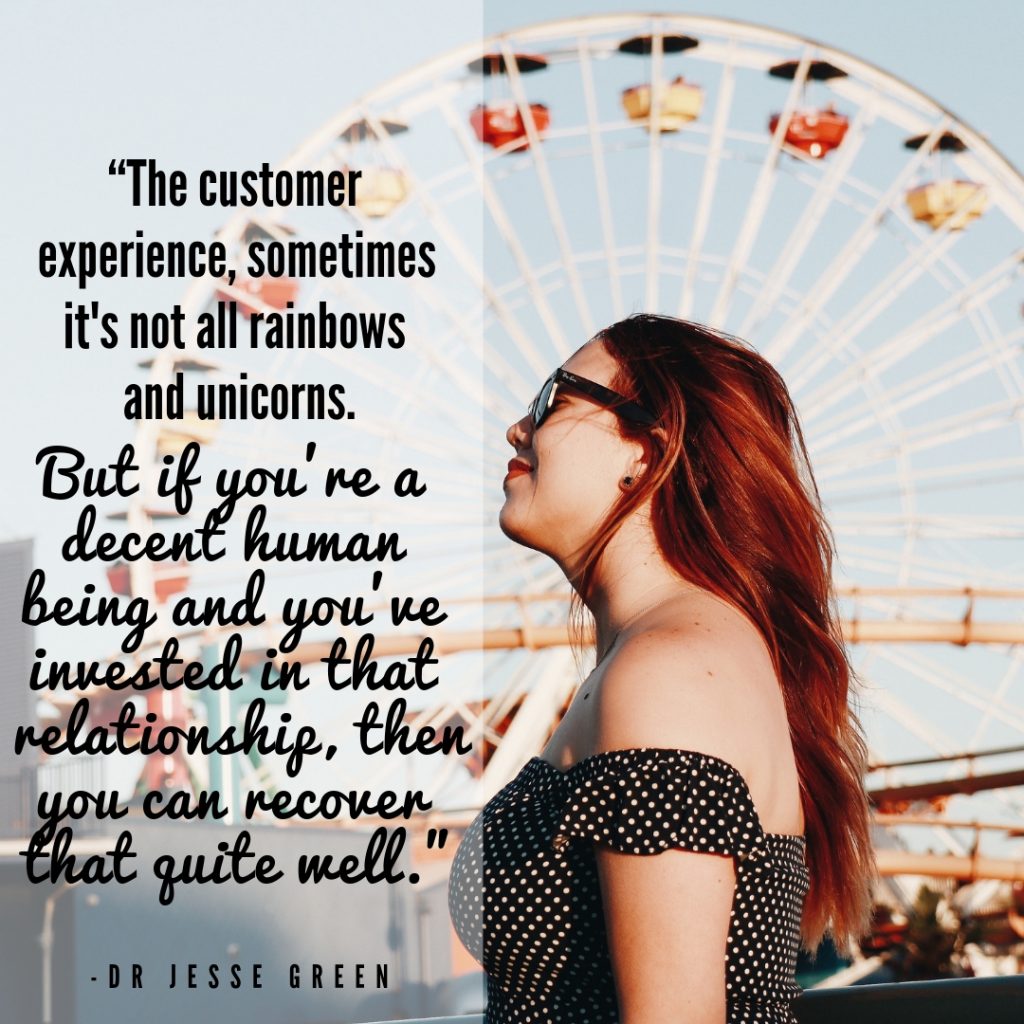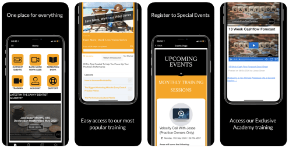The bar for customer service has been set so low it’s almost underground. Giant multinationals like telcos and banks offer famously awful customer service. In comparison, a small to medium-sized businesses have the agility and personal connection to craft a great customer experience. Genuine human interaction might just be one of the ways us little guys have the edge on mega-corporations.
The trick is we just need to know how to do it.
We all know that no one is ever thrilled to sit in a dentist chair and get a crown. But it’s necessary – the same as having Internet and phone service or a bank account.
Dentistry – just like banking and telcos – are a necessity. Offering a wonderful patient experience is a great opportunity for dentists to do something different and stand out in the crowd. Satisfied patients can be your strongest and loudest brand ambassadors. Just like with doctors and car mechanics, once you’ve found a good one, you want to tell everyone you know.
But how do we consistently craft a great patient experience?
Step away from transactional experiences.
So often in today’s modern world, it can feel like we are merely order takers. We’re waiting for people to tell us what to do. Instead of forming genuine relationships with our patients, we are just automatons acting out scripts for each interaction.
Think about purchases that aren’t necessities. Maybe a purse or that nice watch you’ve had your eye on. You form an emotional response to these items. You feel happy when you see it or you like the way it portrays your image to the world.
When anything becomes an emotional buy, the price becomes irrelevant. If you want it enough, you don’t care how much it costs.
The great news is that going to the dentist is already an emotional process. The patient might be in pain or feel fear about a procedure. That’s emotional. If you are able to provide a welcoming, safe patient experience, you can harness this emotional energy into something positive. You can become the place – not where a painful procedure happened – but where they experienced exceptional care.
And it all starts from the moment a patient walks through the door.
Train everyone – not just management.
Each touchpoint that a patient has at your practice can make or break the experience.
Imagine that you have a patient that had a wonderful experience with the receptionist who warmly welcomed her into the practice. Then she has a wonderful interaction with you, the dentist, as you check in before her cleaning to see if she has any concerns. But then maybe the dental technician has had a bad day. Straight away, your patient can sense the tension in the room and their anxiety starts to ratchet up again.
Regardless of every positive interactive she’s had up until that point, this one person has set the tone for the entire experience.
This can be an easy way to go wrong. If there is training in the practice, it might only be focused on a select few instead of everyone that has interactions with your patients.
When it comes to training staff, everyone needs to be involved and understand what is expected as a baseline. We need our team to understand that emotion plays a big part when it comes to buying, selling, and patient retention.
The more times you go back to the same dentist, the more the relationship builds. The more the trust builds. The more likely that over time, the patient is going to accept what the dentist says because there’s a foundation of trust. A good dentist can become an integral part of your life.
But it all starts with a good first impression.
Set your non-negotiables early and reiterate them often.
I often talk about how the actions you walk past on a daily basis quickly devolve into the culture of your practice. If you aren’t demanding a baseline of excellence from your staff on a daily basis, it’s shocking how quickly bad habits can multiply.
Every business needs to come up with their set of non-negotiables. What are the things that we, as a practice, do not stand for? What do we not do when interacting with patients? What do we not tolerate from our fellow co-workers?
All of this should feed directly back into setting up the best patient experience that you can. Even if it’s easier for your staff to set up a contact form on your website, maybe a better patient experience is offering a phone number to call.
You need to set your own parameters. You need to set your own rules.
Commit to 90-Day Plans for improvement.
Non-negotiables are great, but they are nothing but paper unless they’re practised every day. Creating collaborative 90-day plans with each of your staff members is a great way to see constant improvement. Every three months, ask your staff to sit down and write what they are individually going to commit to doing for the business for the next 90 days.
These resolutions can be posted publically in the staff room. Now it’s not just you saying, “Hey, you haven’t done what you said you were going to do.” Other staff members can say, “Hang on – you said you would commit to being here 5 minutes earlier, but you’re still 10 minutes late.”
This helps to create a culture of self-responsibility within your office to ensure that everyone is operating at a high level.
Final Words…
Patient retention is something I’m passionate about (I wrote an entire book on the subject after all!) and pushing to create that sterling first impression is critical.
I truly believe that customer service is one area in which small businesses can outshine global corporations. We can offer that personal touch and lasting relationship that is so often undervalued in today’s world. Not to mention – it makes the world all that more rewarding, doesn’t it?
As always, please consider joining us at the Savvy Dentist Facebook Group. There is some great support and conversation that happens there. Also consider downloading the Savvy Dentist app available for both iPhone and Android to get our whole back catalogue of podcast episodes, additional resources, and more.






